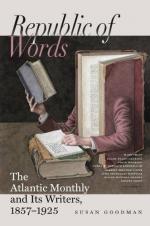That, however I mocked it gayly,
And guessed at its hollowness,
Still shone, with each bursting bubble,
One star in my soul the less.
CITIES AND PARKS:
WITH SPECIAL REFERENCE TO THE NEW YORK CENTRAL PARK.
The first murderer was the first city-builder; and a good deal of murdering has been carried on in the interest of city-building ever since Cain’s day. Narrow and crooked streets, want of proper sewerage and ventilation, the absence of forethought in providing open spaces for the recreation of the people, the allowance of intramural burials, and of fetid nuisances, such as slaughter-houses and manufactories of offensive stuffs, have converted cities into pestilential inclosures, and kept Jefferson’s saying—“Great cities are great sores”—true in its most literal and mortifying sense.
There is some excuse for the crowded and irregular character of Old-World cities. They grew, and were not builded. Accumulations of people, who lighted like bees upon a chance branch, they found themselves hived in obdurate brick and mortar before they knew it; and then, to meet the necessities of their cribbed, cabined, and confined condition, they must tear down sacred landmarks, sacrifice invaluable possessions, and trample on prescriptive rights, to provide breathing-room for their gasping population. Besides, air, water, light, and cleanliness are modern innovations. The nose seems to have acquired its sensitiveness within a hundred years,—the lungs their objection to foul air, and the palate its disgust at ditch-water like the Thames, within a more recent period. Honestly dirty, and robustly indifferent to what mortally offends our squeamish senses, our happy ancestors fattened on carbonic acid gas, and took the exhalations of graveyards and gutters with a placidity of stomach that excites our physiological admiration. If they died, it was not for want of air. The pestilence carried, them off,—and that was a providential enemy, whose home-bred origin nobody suspected.
It must seem to foreigners of all things the strangest, that, in a country where land is sold at one dollar and twenty-five cents the acre by the square mile, there should in any considerable part of it be a want of room,—any necessity for crowding the population into pent-up cities,—any narrowness of streets, or want of commons and parks. And yet it is an undeniable truth that our American cities are all suffering the want of ample thoroughfares, destitute of adequate parks and commons, and too much crowded for health, convenience, or beauty. Boston has for its main street a serpentine lane, wide enough to drive the cows home from their pastures, but totally and almost fatally inadequate to be the great artery of a city of two hundred thousand people. Philadelphia is little better off with her narrow Chestnut Street, which purchases what accommodation it affords by admitting the parallel streets to nearly equal use, and thus




